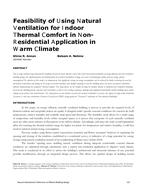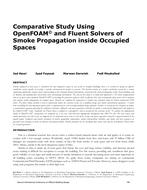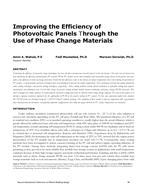-
-
Available Formats
- Options
- Availability
- Priced From ( in USD )
-
Available Formats
-
- Immediate download
-
$16.00Members pay $7.00
- Add to Cart
Customers Who Bought This Also Bought
-

Feasibility of Using Natural Ventilation for Indoor Therm...
Priced From $16.00 -

Energy Efficient Building Design Optimization Using an Un...
Priced From $16.00 -

Comparative Study Using OpenFOAM© and Fluent Solvers of S...
Priced From $16.00 -

Improving the Efficiency of Photovoltaic Panels Through t...
Priced From $16.00
About This Item
Full Description
State of the art computational fluid dynamics (CFD) techniques have become indispensable for understanding physical phenomena, and for modeling and optimizing the performance of engineering devices involving fluid flow and heat and mass transfer mechanisms. Solar wind energy towers have been recently regarded as a bold new approach to the United States and other nations for their ability to provide clean and sustainable energy, overcoming the burdens of alternative energy sources. An energy tower is a tall tower, at least 400 m high, located in a hot and dry region whereby cool water sprayed at top will evaporate and create a downdraft. The produced high velocity airflow will drive turbines at the bottom of the tower and generate electricity. A 2D numerical model of a prospected tower is constructed to study the impact of different operating parameters including spray droplet diameter, spray flow rate, and ambient conditions on the performance of the tower. A Lagrangian-Eulerian multiphase technique is adopted for simulating droplet transport and evaporation. The model is first validated with published measured data extracted from a small scale PDEC experimental test facility at the Conphoebus Institute in Sicily. Results show that the model is able to accurately predict the evaporation phenomena and that an exit velocity of 4.5m/s can be achieved over a 20m height tower.





